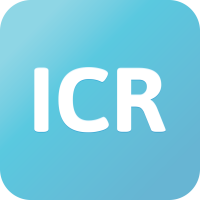
Insufficient Adaptability to Rapidly Changing Circumstances
Insufficient Adaptability to Rapidly Changing Circumstances
Step 1: What problem are you experiencing within the organization, and how is this problem affecting (the performance of) your organization?
The organization lacks the adaptability needed to respond effectively to rapidly changing circumstances. This hampers agility, causes delays in decision-making, results in missed market opportunities, and leads to inefficiencies in processes. Employees feel uncertain, customers become disappointed, and competitors gain an advantage.
Note - Step 1 refers to the consequences of risks that have materialized. Examples include: Cash flow problems - Lower revenue - Higher costs - Inadequate staffing - Inventory issues - Low customer satisfaction - Customer complaints - Customer attrition.
Step 2: Where in the organization or process are the problems occurring, and who is directly impacted?
This issue affects multiple areas of the organization:
- Strategy and Management: Lack of a forward-looking vision or flexibility in strategy.
- HR: Insufficient agility in team structures and skills.
- Operational Departments: Difficulty adapting processes to new demands or technologies.
- IT: Outdated systems that do not provide the flexibility required for rapid adjustments.
Note - For step 2 consider responsibility areas such as finance, marketing, sales, IT, HR, procurement, core processes, investments, quality, compliance, and care.
Step 3: What exactly is happening within or to the organization that is causing the problem?
The following risk events contribute to the problem:
- Slow decision-making due to unclear priorities or a lack of alignment.
- Outdated technology unable to quickly adapt to new requirements.
- Lack of training and development for employees, leaving them unprepared for change.
- Insufficient monitoring of market and competitor developments.
Note - This refers to risks such as: Delayed customer payments affecting timely bill settlements - Logistical process disruptions - Competitors acquiring customers - Inadequate staffing.
Step 4: Is the root cause of the risk internal or external to the organization?
The root cause is primarily internal:
- Insufficient strategic planning and flexibility.
- Lack of a culture of continuous improvement and innovation.
- Hierarchical structures that hinder rapid decision-making.
External factors, such as technological disruption and changing customer expectations, can exacerbate the challenge.
Step 5: What is the underlying cause of the risk?
The underlying causes may include:
- No integrated system for risk management and flexibility.
- Insufficient team intuition to proactively respond to change.
- Lack of a clear framework for goal-focused prioritization.
- Limited insight into future customer and market needs.
Note - Examples of step 5 include: Sales teams selling products/services that cannot be delivered to customers, leading to dissatisfaction and delayed payments - Outdated IT systems - Failing to meet customer commitments - Negative word-of-mouth - Increased competition for attracting and retaining talent.
Solutions via ICR
Solution Path 1: Immediate Action
An emergency response:
- Prioritize and accelerate decision-making by establishing temporary task forces.
- Conduct a rapid situational analysis to focus on the most urgent adjustments.
- Offer quick training or workshops to better prepare employees for change.
- Implement a swift audit of processes to identify and address inefficiencies.
Solution Path 2: Sustainable Solution
A long-term approach:
- Develop a flexible strategy using ICR software to better anticipate future changes.
- Build a culture of continuous improvement by training teams in agility and innovation.
- Optimize the organizational structure to support quick decision-making and adaptability.
- Integrate adaptability in the management cycle, tied to measurable (Key) Performance Indicators.
- Ensure an up-to-date IT infrastructure that supports rapid changes.
What Are the Benefits?
Immediate Action
Enhanced agility and reduced delays in responding to new circumstances.
Sustainable Solution
A future-proof organization with a culture of flexibility, innovation, and proactivity, allowing opportunities to be seized more effectively and risks to be addressed in a timely manner.
Note
No action means that risk events will continue to occur, and therefore the resulting problems will continue to exist within the organization.
Visit 'Welcome to ICR Troubleshooting' to download our free e-book.
Move to other common problems.
Route ICR Community
Get to know ICR at your own pace and completely free of charge via the Route ICR Community.
Sharing knowledge, experiences and network with like-minded individuals. Because we all want to be sustainably successful!


